"'Cup of Fear' produced and entered by the Stamford (Connecticut) Cinema Club and photographed by John Harms, is a well directed, acted and photographed 'whodunit' in which one of several office employees who have been passed up in a company promotion, murders the hapless executive promoted to the vice-presidency. A cup of wine, antidote for poison supposedly fed the murderer at a dinner, proves his undoing. All shots are interiors and save for one or two, are excellently lighted and photographed. Many professional touches, such as dolly shots, dramatic camera angles, and story-telling closeups highlight the picture. Harms used a 16 mm. Bolex camera and Kodak Super-X panchromatic film." American Cinematographer, Apr. 1950, 146.
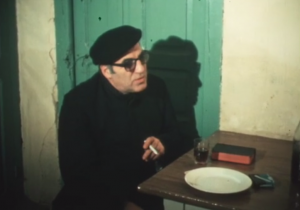
Un cura preocupado de que una pareja viva en el mismo hogar sin estar casados, pide un milagro. Reza para que alguien en la pareja se enferme a fin de que valoren la vida y entiendan la necesidad de seguir los preceptos de su religión.
A priest concerned with a couple living together without being married, asks for a miracle. He prays for someone in the couple to become ill so that they will value life and the need to follow the precepts of religion.
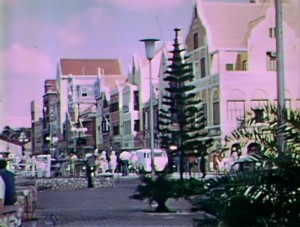
"Hansen gives to Curacao, a Caribbean territory of Netherlands, a visit. He films the industrial, residential, and commercial areas of Willemstad." UC San Diego Library.
"Curt is the story of a blind college student and the world in which he must live. Although he puts on a brave front, his problems exist and he must take them in stride. Dennis Thomas, who produced the film, brings his character to the audience, breathing life into him so effectively than long after the film is through one has a feeling for Curt and his world. The black-and-white photography is excellent throughout and the pacing shows an excellent knowledge of the mechanics of editing. This film well deserves the Student Film Award it received" PSA Journal, Sept. 1964, 50.
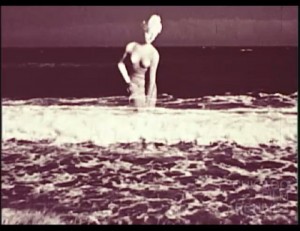
"A short travelogue film on the Republic of Cyprus. A narrator warmly introduces viewers to the charms, history and people of Cyprus." Chicago Film Archives.
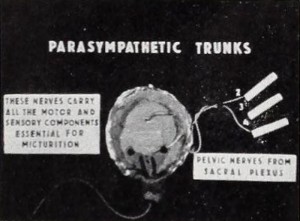
"Dr. A. I. Willinsky has made an important contribution to medicine in his film Cystometrography. The initial part of the movie shows brilliant use of models in this amazing recording of bladder pressure. The second portion deals with the machines used in study technique and includes one developed by Dr. Willinsky himself. The picture culminates with a series of charts, showing the wide variety of clinical records kept. The film is a very intelligently planned, comprehensive statement of the method that Dr. Willinsky is presenting." Movie Makers, Dec. 1945, 496.
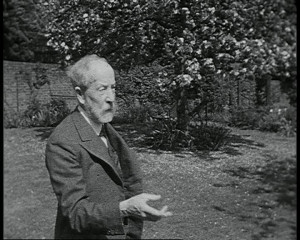
"Film footage of an elderly man, who due to the title placed on the film is likely to be Eunice Alliott’s father, Benjamin Hawes Allcroft Wilson ('Dad'), and shots of a woman named Violet, who is most likely Violet Rachel Caroline Hawes Wilson ('Violet'), Eunice Alliott’s younger sister." (EAFA Database)
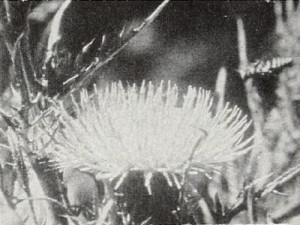
"The recipe for a film like Dad and I Took a Walk sounds simple enough. You take equal parts of Father and Son, add a cupful of scenery, season with judicious pinches of natural science — and cook till done. The secret, apparently, lies with the "cook till done" section; so much depends on the cook. But W. W. Vincent, jr., is a good chef, to judge by the results from his cinematic oven. In clean cut, tripod steady Kodachrome, he and his son are seen roaming the pleasant Wisconsin landscape, with nicely timed pauses to point out, one to the other, a nesting robin, a praying mantis or a bright snake asleep in the warming sun. As the two men discuss their finds, spoken titles are double exposed against appropriate backgrounds or the pages of a bird manual are inserted naturally in full frame closeups. Dad and I Took a Walk is an attractive blend of personal filmdom's most popular subjects — field, family and fauna." Movie Makers, Dec. 1942, 508.
"The Daggy Shoe Caper takes less time to view than it does to read this review. The film lasts only 45 seconds, but in that time we learn an important lesson in life. You see there is this daggy shog and he puys a biece of meat. But when he sees his weflection in the rawter he gets selfish and mabs for the greet the other daggy shog has and - you've heard that one before, but the moral of the story is a new one! Great humor" PSA Journal, Aug. 1967, 37.
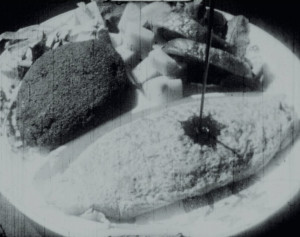
"Just a few years after the commercial release of Pathé Baby equipment [Mori Kurenai] was already a master of his craft, using a variety of trick shots, special effects, stop-motion animation, colouring processes, dialectical montage... Kitchen Drama is a vivid, fast-paced, and delicate portrayal of female domestic labour." - Anna Briggs, Michele Manzolini and Mirco Santi, "The Making of 9 1/2," Journal of Film Preservation, 108 (April 2023): 73.
Total Pages: 299